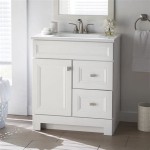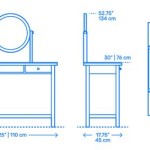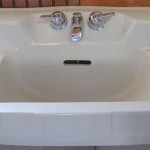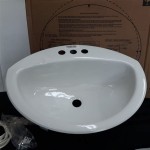How To Mix Tiles In Bathroom
Mixing tiles in a bathroom can elevate the space from ordinary to designer-chic. A well-executed mix adds visual interest, highlights architectural features, and allows for personalized style expression. However, a haphazard approach can lead to a chaotic and unappealing result. This article outlines the key considerations and techniques for successfully mixing tiles in a bathroom.
Choosing a Dominant Tile
Selecting a dominant tile sets the foundation for the entire design. This tile typically covers the largest surface area, such as the floor or shower walls. The dominant tile establishes the overall aesthetic, whether it's modern, rustic, or traditional. It serves as the anchor for incorporating accent tiles and other design elements.
Selecting Accent Tiles
Accent tiles provide contrast and personality. They can be used to create focal points, highlight specific areas, or introduce patterns and textures. The key is to select accent tiles that complement the dominant tile without clashing. Consider variations in color, shape, size, or finish.
Harmonizing Colors and Patterns
Achieving a cohesive look involves careful consideration of color palettes and patterns. One approach is to choose tiles within the same color family but with varying shades and intensities. Another strategy is to use a neutral dominant tile and incorporate bolder accent tiles with complementary colors. If using patterned tiles, ensure the scale and style of the patterns work together harmoniously.
Considering Tile Sizes and Shapes
Playing with different tile sizes and shapes adds depth and dimension. Large format tiles create a sense of spaciousness, while smaller tiles offer intricate detail. Mixing sizes strategically can create visual interest, such as using larger tiles on the floor and smaller tiles on the shower walls. Experimenting with shapes, like hexagons or subway tiles, can further enhance the design.
Defining Zones with Tile
Tiles can be used to delineate different zones within the bathroom. For instance, a different tile can be used in the shower area to create a visual separation from the rest of the bathroom. This technique also works well for highlighting a vanity area or creating a backsplash behind the sink. The zoning approach adds both functionality and aesthetic appeal.
Creating Visual Flow with Tile
Maintaining visual flow is crucial for a harmonious design. This can be achieved by using a consistent grout color throughout the bathroom, even with different tile types. Repeating certain tile elements, such as color or shape, in different areas can also create a sense of continuity. Avoid abrupt transitions between tile styles to maintain a smooth and cohesive aesthetic.
Balancing Texture and Finish
Texture and finish play a significant role in the overall aesthetic. Mixing matte and glossy tiles can add depth and visual interest. Textured tiles, such as those with a stone or wood-like finish, can introduce tactile appeal and warmth. Consider the overall style of the bathroom when selecting tile finishes. A modern bathroom might benefit from sleek, glossy tiles, while a rustic bathroom might suit textured, matte tiles.
Planning Tile Layout
Before installation, meticulous planning is essential. Create a detailed layout that specifies the placement of each tile type. This includes considering grout lines, transitions between different tiles, and any patterns or designs to be incorporated. A well-planned layout ensures a professional and cohesive final result. Visualization tools, such as online tile design software, can assist in this process.
Testing Tile Combinations
Prior to committing to a large purchase, it's advisable to test different tile combinations. Order samples of the chosen tiles and lay them out together to visualize how they interact. This allows for adjustments and refinements before making a final decision. Consider the lighting in the bathroom when assessing the tile combinations, as lighting can significantly affect the appearance of colors and finishes.
Grout Selection
Grout selection is often overlooked, but it plays a vital role in the overall aesthetic. Grout color can either blend in with the tiles for a seamless look or create contrast for a more dramatic effect. Consider the size of the tiles and the desired style when choosing grout color. Wider grout lines can accentuate the tile shapes, while narrower grout lines create a more streamlined appearance. The grout type should also be considered, with epoxy grout offering greater stain resistance and durability, particularly in wet areas.
Professional Installation
While some homeowners may opt for DIY tile installation, professional installation is recommended, especially for complex designs. Experienced tile installers possess the expertise to handle various tile types, ensure proper leveling and spacing, and achieve a flawless finish. Professional installation minimizes the risk of errors and ensures a long-lasting and aesthetically pleasing result.

9 Tips For Mixing And Matching Tile Styles

How To Mix Match Bathroom Tiles Mandarin Stone

Mixing Tiles In A Bathroom 3 Simple Steps Nina Hendrick

Tiles Talk 5 Ways To Mix Match Tile Sizes In Your New Bathroom Perini

25 Stylish Ways To Mix And Match Bathroom Tiles Shelterness

141 Mix And Match Tile Ideas In Bathrooms Digsdigs

9 Tips For Mixing And Matching Tile Styles

Mix Match Your Floor Wall Tiles Stone Tile Company

10 Ways To Mix And Match Tiles In The Bathroom

25 Stylish Ways To Mix And Match Bathroom Tiles Shelterness
Related Posts







